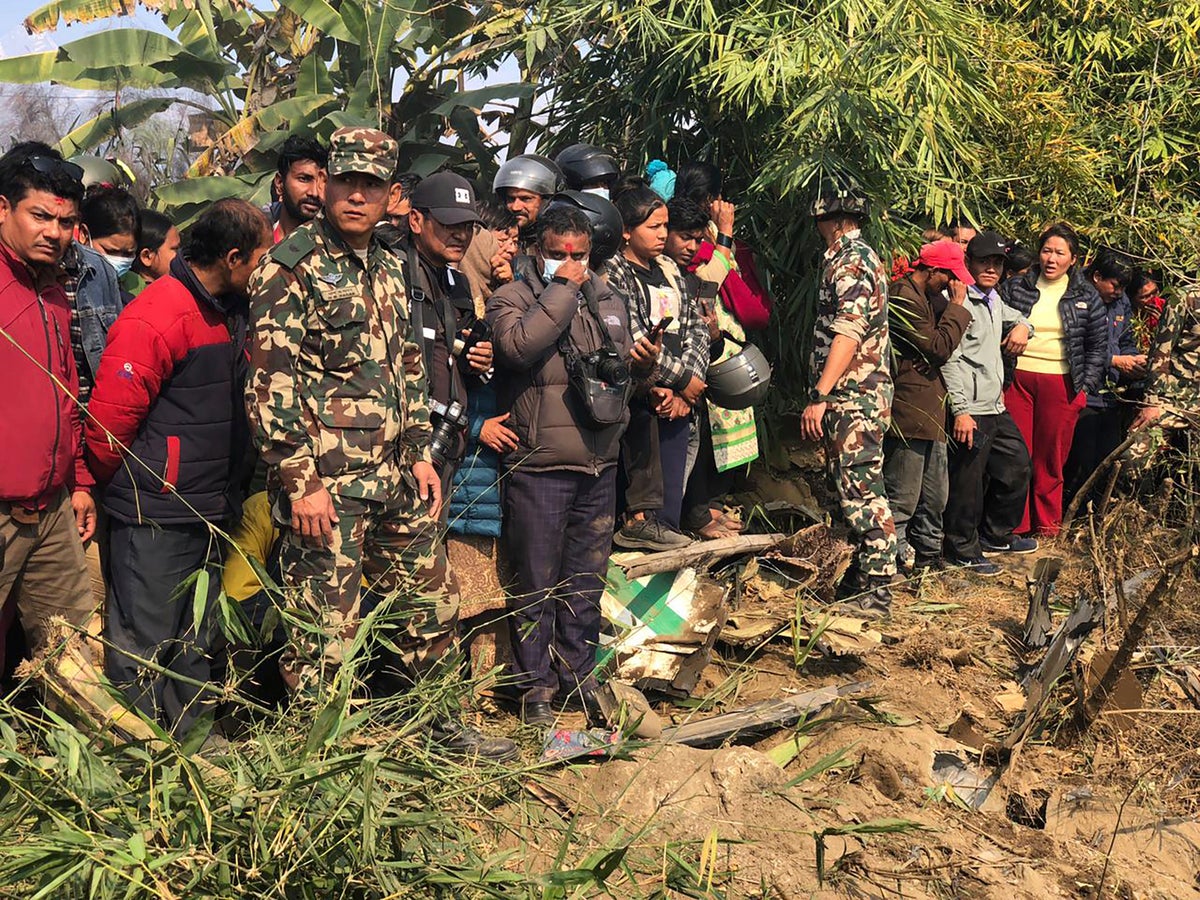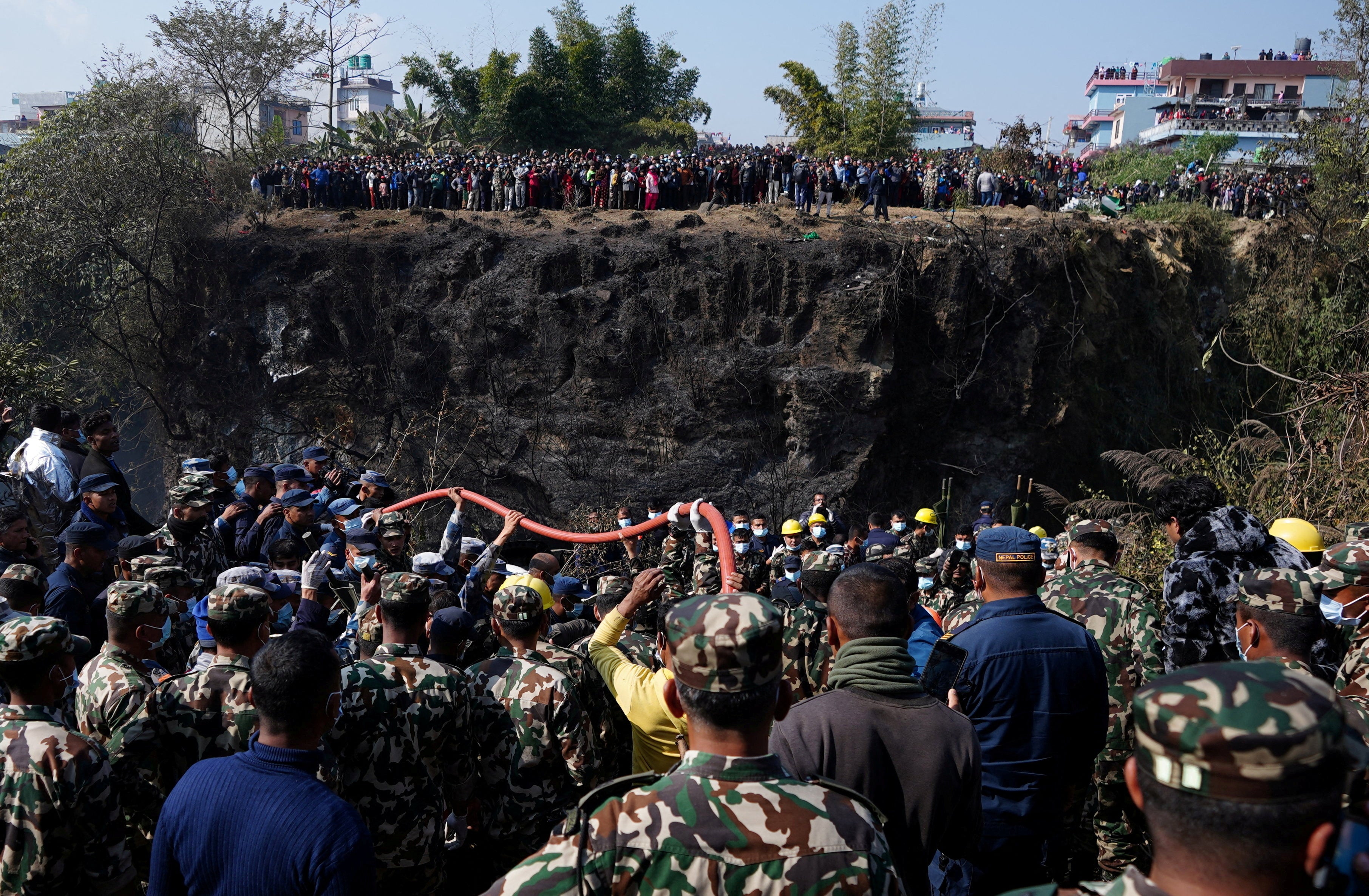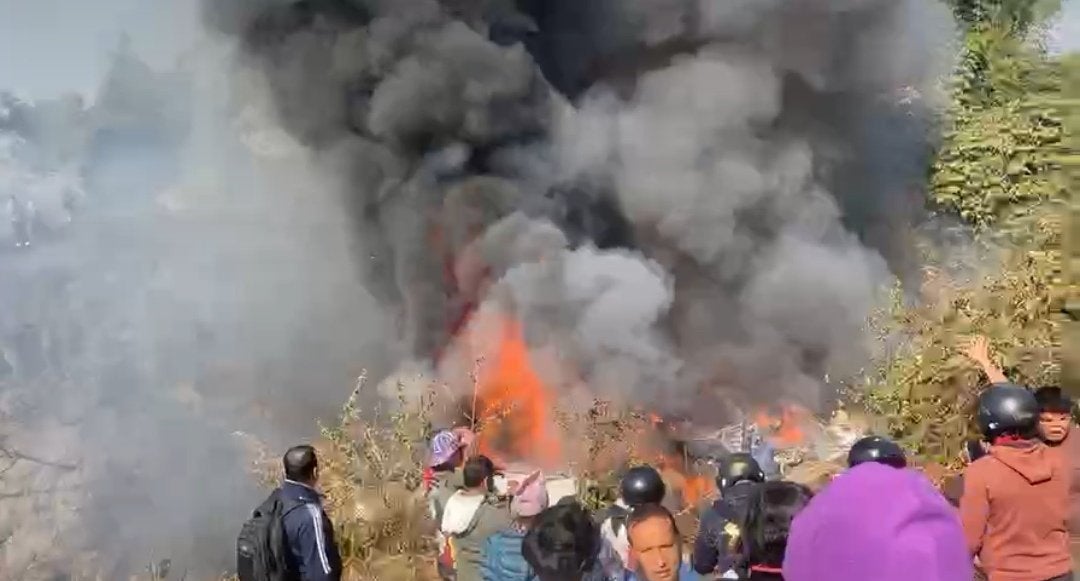
At least 68 people are now known to have died after an aircraft with 72 people on board crashed near Pokhara international airport in Nepal on Sunday morning.
The Yeti Airlines twin-engine ATR 72 aircraft carrying 68 passengers and four crew members departed from Kathmandu and crashed on approach to Pokhara airport.
The passengers included two infants and several foreign nationals, according to airline spokesperson Sudarshan Bartaula. The aircraft crashed between the old airport and Pokhara international airport, the airline spokesperson told The Kathmandu Post.
Quoting an official from Nepal’s Civil Aviation Authority (CAA), Reuters reported later in the day that the death toll from the crash stood at 68.
The aircraft made contact with the airport at 10.50am local time, Jagannath Niroula, a spokesperson for Nepal’s CAA, said in a statement. “Then it crashed.”
A five-member panel has been set up to investigate the cause of the crash. The federal government has declared a day of national mourning on Monday.
“Procedure to identify the victims is under way,” Dr Bharat Bahadur Khatri, director of Pokhara Academy of Health Sciences, told The Kathmandu Post at around 4.15pm local time on Sunday.

According to Aviation Safety Network, the crash is Nepal’s deadliest since 1992, when a Pakistan International Airlines Airbus A300 crashed into a hillside on approach to Kathmandu killing all 167 people on board.
Purported videos and images of the incident shared on social media show plumes of smoke billowing from the crash site. “We expect to recover more bodies,” army spokesperson Krishna Bhandari earlier told Reuters. “The plane has broken into pieces.”

According to Nepal’s CAA, there were 53 Nepalis, five Indians, four Russians, one Irish, two South Koreans, one Australian, one French and one Argentinian on board.
The airport has been temporarily shut. Meanwhile, Yeti Airlines said later in the day that it had cancelled all regular flights scheduled for 16 January, following the crash.
Read more: Passenger aviation worldwide has become extraordinarily safe, but Nepal is the tragic outlier
Prime minister Pushpa Kamal Dahal, who rushed to the site of the crash, earlier urged security personnel, all agencies of the Nepal government and the general public to mount an effective rescue. He also called for an emergency meeting of the council of ministers.
“Half of the plane is on the hillside,” Arun Tamu, a local resident, was quoted as saying by Reuters. Mr Tamu reached the site of the crash minutes after the plane went down. “The other half has fallen into the gorge of the Seti River,” he said.
The plane was reportedly 15 years old. The ATR 72 is a widely used turboprop plane manufactured under a joint venture by Airbus and Italy’s Leonardo.
The tourist town of Pokhara is located about 200km (124 miles) northwest of the capital Kathmandu.
Twenty-two people died in May last year after a small plane operated by Tara Air – a subsidiary of Yeti Airlines – crashed in a mountainous region after taking off from Pokhara.
Nepal has a poor aviation safety record, blamed partly on an ageing fleet of aircraft but also on its unique topography. The country is home to eight of the world’s 14 highest mountains, including Mount Everest, and experiences unpredictable cloud cover and visibility as a result.

In 2018, a US-Bangla Airlines crash at the country’s Tribhuvan international airport killed 51 of the 71 people on board.
Two years prior to that, a Tara Air Twin Otter plane flying the same route crashed, killing all 23 on board.







